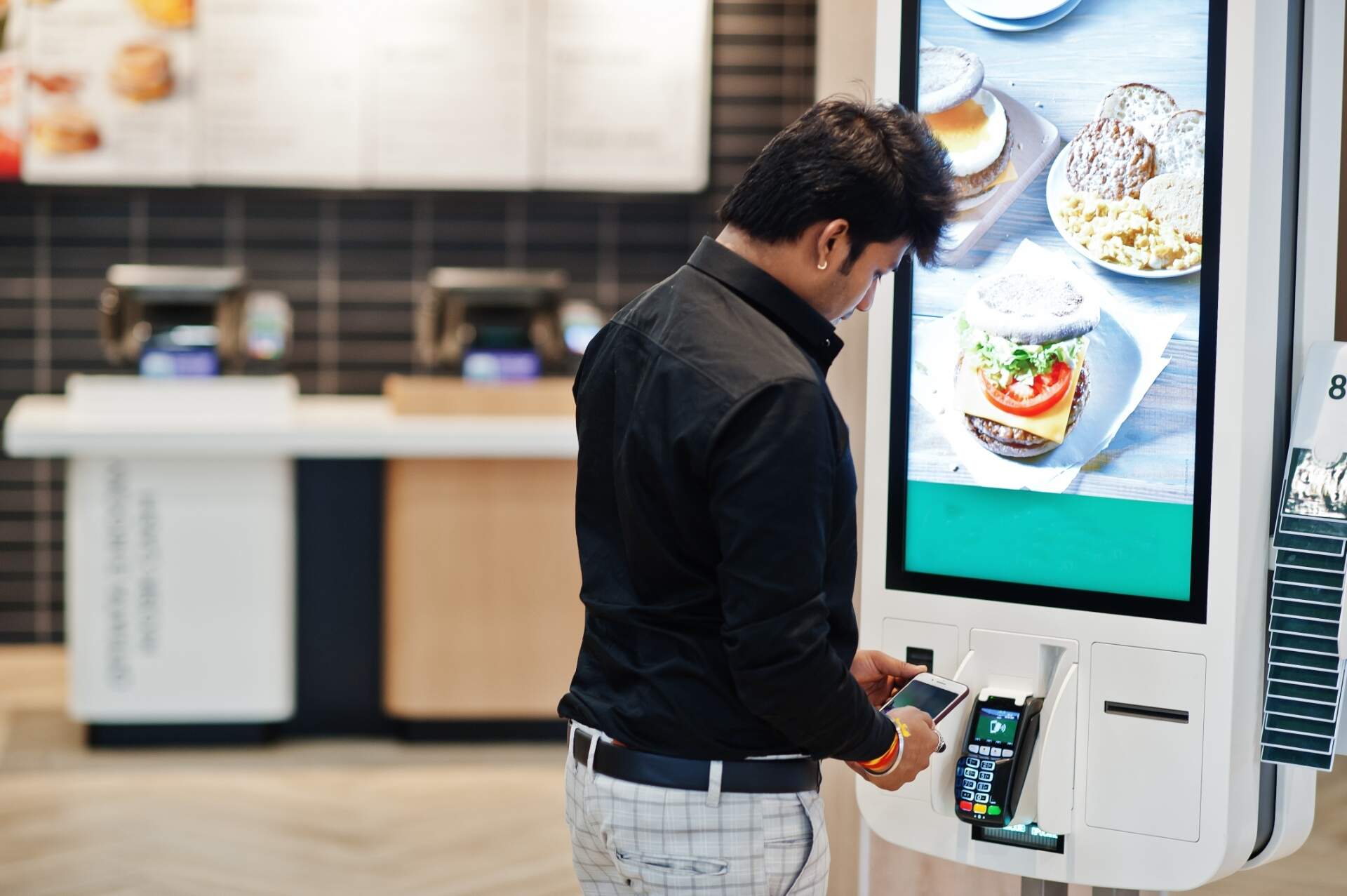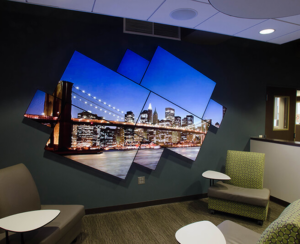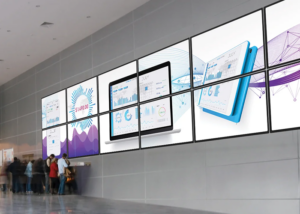Over the past few decades, digital signage has undergone a remarkable transformation, revolutionizing the way businesses communicate and engage with their audiences. What began as simple, static displays has evolved into dynamic, interactive experiences that are shaping industries and providing a glimpse into the future of engaging visual communication. In this blog, we will delve into the fascinating journey of digital signage, tracing its transformation and discussing the latest trends, technological advancements, and industry-specific use cases.
Introduction to Digital Signage
Digital signage, in its early days, consisted of static displays that served a singular purpose – to convey information. These were essentially electronic billboards, often used for advertising or relaying important announcements. These early digital signs were a significant departure from traditional static advertising screens and were especially popular in public spaces such as airports, malls, and transportation hubs. This marked the beginning of a technology evolution that would change the face of advertising and information dissemination.
Key aspects of the history of digital signage include:
Digital Signage History
Initially, digital signage technology relied on basic electronic displays, which offered an edge over traditional printed signage due to their ability to display dynamic content. However, these displays lacked the interactivity that we now associate with modern digital signage.
Static Displays
Static displays were initially limited in their capabilities. They were essentially digital versions of traditional billboards, unable to adapt or respond to real-time data or user interaction.
As technology evolved, so did the potential of digital signage. The rise of the internet and advancements in hardware and software paved the way for a more interactive and dynamic future.
The Rise of Interactive Signage
One of the most significant turning points in the evolution of digital signage was the development of interactive technology. Touch-screen displays and other interactive features brought digital signage to life, enabling user engagement in ways that were previously unimaginable.
Interactive Experiences
Interactive digital signage allows users to actively engage with content. Whether it’s a touch screen in a retail store, an interactive map in a museum, or a wayfinding kiosk in a hospital, these experiences captivate audiences by providing real-time information, entertainment, and functionality.
Digital Signage Trends

The rise of interactivity has given birth to several digital signage trends. These trends include:
- Personalization: Tailoring content to individual preferences and demographics.
- Wayfinding and Maps: Helping users navigate complex spaces with ease.
- Social Media Integration: Displaying user-generated content and social feeds in real time.
- Analytics: Collecting data to measure engagement and ROI.
These trends have transformed digital signage into a powerful marketing and communication tool, making it more relevant and impactful than ever before.
Technological Advancements
Behind the scenes, technological advancements have played a crucial role in the evolution of digital signage. The hardware and software used in digital signage systems have become increasingly sophisticated, enabling greater flexibility and creativity in content creation and delivery.
LED Displays
One of the most noticeable advancements is the transition from traditional LCD displays to LED displays. LED screens offer better brightness, contrast, and flexibility, making them ideal for both indoor and outdoor use. These displays can be customized in various shapes and sizes, making for eye-catching installations
Content Management Systems
Content management systems (CMS) have become pivotal in managing and distributing content across digital signage networks. They provide the ability to schedule content, monitor displays, and even deliver content in real time, all from a centralized platform. This has simplified the process of updating and maintaining digital signage networks.
Real-Time Updates
Real-time updates have become a game-changer in digital signage. Whether it’s live sports scores, stock market data, or news headlines, real-time information keeps audiences engaged and informed. This feature is especially popular in retail environments where pricing and inventory can change rapidly.
Dynamic Content
Dynamic content is about delivering relevant messages to the right audience at the right time. This is achieved through data integration, audience analytics, and user-triggered content. Dynamic content ensures that digital signage remains fresh and appealing, improving engagement and ROI.
4K and Beyond
As display technology advances, so does resolution. 4K displays, with their incredible clarity and detail, have become the new standard. Some installations are already pushing the boundaries further with 8K displays. These ultra-high-definition screens offer a more immersive viewing experience and are perfect for applications like video walls.
AI-Driven Signage
Artificial intelligence (AI) is gradually making its way into digital signage. AI-driven signage can analyze audience demographics, behavior, and preferences to deliver content that’s more likely to capture attention and generate engagement. It can also detect and respond to user gestures and interactions, making the user experience even more immersive.
With all these technological advancements, digital signage has become more versatile and capable of meeting a wide range of industry-specific needs.
Industry-Specific Use Cases
The versatility of digital signage has made it a valuable asset across various industries. Here are a few examples of how different sectors are using digital signage to their advantage:
Retail
Retailers use digital signage for product displays, promotions, wayfinding, and even virtual changing rooms. Interactive displays allow customers to explore products in a more engaging way, enhancing the overall shopping experience.
Quick-Service Restaurants (QSR)
 Quick-service restaurants have adopted digital signage to streamline their operations and improve the customer experience. Digital menu boards not only provide a dynamic platform to showcase their offerings but also enable real-time updates for pricing, promotions, and menu changes. Furthermore, interactive kiosks in QSR establishments allow customers to place orders, customize their meals, and pay seamlessly. This not only speeds up the ordering process but also reduces errors and enhances order accuracy. Digital signage in QSR settings has become an indispensable tool for optimizing service and increasing customer satisfaction.
Quick-service restaurants have adopted digital signage to streamline their operations and improve the customer experience. Digital menu boards not only provide a dynamic platform to showcase their offerings but also enable real-time updates for pricing, promotions, and menu changes. Furthermore, interactive kiosks in QSR establishments allow customers to place orders, customize their meals, and pay seamlessly. This not only speeds up the ordering process but also reduces errors and enhances order accuracy. Digital signage in QSR settings has become an indispensable tool for optimizing service and increasing customer satisfaction. Telecommunications
The telecommunications industry has embraced digital signage to enhance customer engagement. Telecom companies use digital displays in their stores to showcase the latest devices and service offerings. Interactive touch screens provide customers with product information, pricing details, and plan comparisons. This not only simplifies the decision-making process for consumers but also allows telecom providers to highlight their diverse product portfolios effectively.
Healthcare
Hospitals and clinics use digital signage for wayfinding, appointment reminders, and real-time updates on wait times. These systems help reduce patient stress and improve the overall patient experience.
Hospitality
Hotels and restaurants use digital signage for digital menus, event promotions, and guest information. Interactive displays in hotel lobbies provide guests with a wealth of information at their fingertips.
Education
Universities and schools use digital signage for campus maps, event promotions, and class schedules. Interactive kiosks can enhance campus navigation for students and visitors alike.
Transportation
Airports and train stations use digital signage for real-time flight and train information, wayfinding, and safety announcements. These displays are essential for keeping travelers informed and on schedule.





